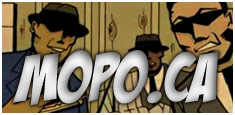Hawaii Dollars
The U.S. Constitution specifically gives Congress the power to coin money, and an 1884 Supreme Court decision makes it clear that this power also applies to paper currency (in that case, backed by gold.) And with rare exception, money printed for use in one state is valid for use in the other states and American territories. One exception: the bills pictured, below.
Pay attention to the sides of the front of the bill — you will see the word “HAWAII” printed, vertically, on either side, next to the seals. The obverse is more clear, with the word “HAWAII” printed over the picture of the Lincoln Memorial and spilling into the sides. What’s going on here?
On December 7, 1941, Japan bombed Pearl Harbor, Hawaii, bringing the U.S. into World War II in the process. Hawaii (not yet a state) was isolated both geographically and politically and — given the losses at Pearl Harbor especially — was the most likely widely-inhabited American candidate for a successful Japanese occupation. Any successful occupation would also allow the invading Japanese to seize, potentially, hundreds of millions of dollars in currency from Hawaiian financial institutions. With federal spending still in the tens of billions, such an outcome would have been significantly harmful to the American economy. The HAWAII-emblazoned bills were the solution.


